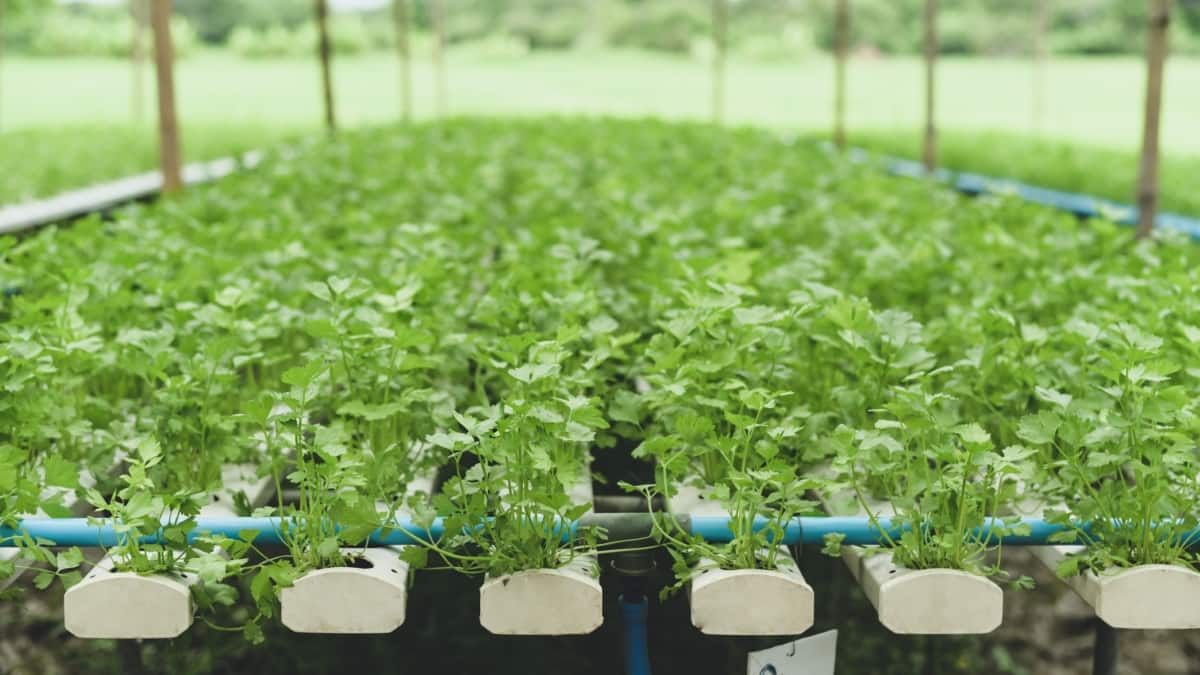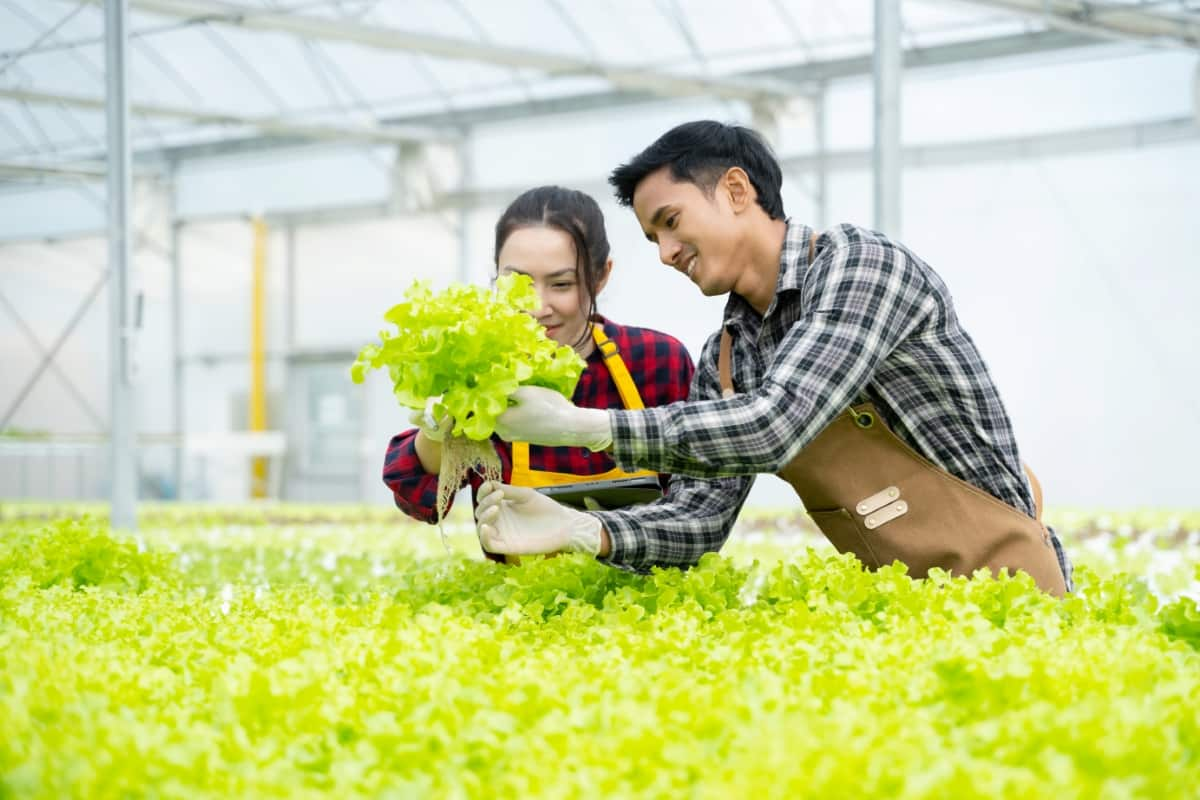Harnessing solar power for hydroponic systems offers sustainable and efficient cultivation. This guide explores the advantages, system design essentials, and potential challenges. Discover the benefits of eco-friendly energy integration key design considerations and overcome challenges for a successful solar-powered hydroponic setup.

How to Set Up Solar-Powered Hydroponic System
Understanding Solar-Powered Hydroponics
Installing a solar-powered hydroponic system combines innovative agriculture with sustainable energy and has several advantages. To start, pick a spot that receives plenty of sunlight in order to get the most out of solar energy. Achieving optimal system design requires the selection of efficient solar panels and their placement to optimize the absorption of sunlight. This lowers expenses and has a positive environmental impact by reducing dependency on conventional energy sources.
Effective energy storage options, like batteries, ensure a steady supply of electricity, even on overcast days or at night. Designing a hydroponic system with water and nutrient circulation as top priorities will let plants flourish without soil. Although there are some initial setup costs, the long-term savings and environmental benefits outweigh these. Routine maintenance ensures the best performance. In conclusion, adopting solar-powered hydroponics is a wise, environmentally responsible way to practice modern agriculture while also supporting sustainability goals.
Benefits of Solar-Powered Hydroponics
- Environmental Sustainability: Solar-powered hydroponics reduce environmental impact by using clean and renewable solar energy.
- Cost Efficiency: Integration of solar power lowers operational costs, enhancing economic viability for farmers.
- Reliable Energy Source: Solar energy ensures a consistent and reliable power supply, optimizing plant growth and increasing crop yields.
- Access in Remote Areas: Suitable for deployment in remote areas without access to traditional power grids, promoting food security.
- Modular and Scalable: Modular and scalable systems cater to various agricultural needs, offering flexibility in deployment.
- Community Empowerment: Empowers communities by providing a sustainable and independent energy source for agriculture.
Components of Solar-Powered Hydroponic Systems
- Solar Panels: These absorb sunlight, converting it into electricity for system operation.
- Photovoltaic Controller: Manages energy flow from solar panels to prevent overcharging and ensure optimal power usage.
- Water Pump: It circulates nutrient-rich water throughout the hydroponic system using solar energy.
- Nutrient Reservoir: Holds the nutrient solution, supplying essential elements for plant growth.
- Grow Trays: Containers for plants, where they receive water and nutrients directly, promoting efficient nutrient absorption.
- Grow Medium: Substrate supporting plant roots, often devoid of soil, ensuring better aeration and nutrient access.
- Drip System: Delivers nutrient solution to plant bases drop by drop, minimizing waste and ensuring precise delivery.
- pH and EC Meters: Monitor and regulate nutrient solution acidity and electrical conductivity for optimal plant health.
- Automation Systems: Utilize sensors and timers to automate processes, enhancing efficiency and reducing manual intervention.
- Backup Power Source: Ensures system continuity during periods of low solar energy availability, safeguarding plant health.
In case you missed it: How to Grow Broccoli in a Hydroponic System: Way of Growing Broccoli without Soil

Maximizing Energy Efficiency in Solar-Powered Hydroponics
To optimize energy efficiency in solar-powered hydroponics, creative resource optimization methods are essential. High-efficiency solar panels can capture sunlight and convert it into power with up to 22% efficiency. Energy storage devices like lithium-ion batteries can store extra energy for later use. Customized LED grow lights can save energy over conventional lighting setups. Nutrition delivery systems and water pumps can increase system efficiency.
Intelligent monitoring and control systems use automation and sensors to adjust energy use based on environmental conditions. Solar panels should be kept clean and maintained regularly to maximize their energy absorption. These strategies can enhance energy efficiency, reduce environmental impact, and increase crop output in solar-powered hydroponics systems.
Design Considerations for Solar-Powered Hydroponic Installations
Hydroponic systems driven by solar energy require careful planning to ensure maximum efficiency. First and foremost, choosing the right solar panels is crucial because high-efficiency photovoltaic panels maximize energy conversion. Continuous functioning during periods of low sunshine is ensured by integrating a dependable energy storage system. Utilizing intelligent irrigation systems to reduce water use is crucial for effective water management. It is important to have adequate shade measures in place to shield crops from heat stress.
Using automation and sensor technologies maximizes the use of available resources and improves system performance as a whole. Additionally, choosing weather-resistant and robust building materials ensures endurance and low maintenance. In order to detect possible problems early on and maintain continuous output in the solar-powered hydroponic system, regular monitoring and maintenance procedures are crucial.
Overcoming Challenges in Solar-Powered Hydroponic Systems
Overcoming obstacles in hydroponic systems driven by solar energy is essential for sustainable farming. Unpredictable sunshine is one challenge that can be overcome by including energy-storage devices like batteries. Effective water management is a challenge that sophisticated hydroponic methods and intelligent irrigation systems overcome. Using climate control technologies guarantees ideal growing conditions for plants by mitigating temperature swings.
In case you missed it: Hydroponics Organic Certification: How to Meet Organic Standards in Hydroponic Farming

Although controlling pests can be difficult, using integrated pest management techniques can help you use less dangerous pesticides. Furthermore, cultivating public awareness and offering instruction helps fill up farmers’ knowledge gaps. In conclusion, overcoming these obstacles calls for an all-encompassing strategy that embraces technological advancements and encourages knowledge among farmers for the development of successful solar-powered hydroponic systems.
Environmental Impact of Solar-Powered Hydroponics
Hydroponics powered by solar energy is a sustainable farming method that has a good effect on the environment. In contrast to conventional farming, it lessens dependency on fossil fuels by using solar energy to power hydroponic systems. Because hydroponic farming uses a great deal less water than conventional farming, this technique helps to manage water resources sustainably.
Furthermore, the likelihood of soil erosion and degradation is reduced when there is no soil present. This system’s solar panels have a low carbon impact, supporting sustainable energy. The combination of hydroponics and solar electricity creates a more effective and sustainable agriculture model, demonstrating its ability to address environmental issues and advance a more environmentally friendly future.
Future Trends in Solar-Powered Hydroponics
- Sensor-based monitoring and automation improve crop management, ensuring optimal growth conditions.
- As a result of this tendency and the rising desire for locally grown, fresh produce, solar-powered hydroponics is poised to become a major force in agriculture in the future.
- As economies of scale kick in, we can expect a wider adoption of solar-powered hydroponics, contributing to global food security and environmental conservation.
- The future holds exciting possibilities for solar-powered hydroponics, with ongoing research focusing on enhancing system efficiency and incorporating renewable energy storage solutions.
- These developments are crucial for creating resilient and self-sufficient agricultural systems capable of meeting the challenges of a rapidly changing world.
Regulatory Considerations for Solar-Powered Hydroponics
Hydroponics driven by solar energy requires compliance with energy, agricultural, and environmental standards. Solar-powered systems must abide by zoning laws, environmental impact studies, and municipal building codes. Regulations pertaining to energy can also affect the capacity and size of solar arrays.
Hydroponic farming techniques may be subject to agricultural laws, guaranteeing the safety and quality of the food produced. Adherence to government subsidies and incentives for the use of renewable energy is essential. Permits for hydroponic and solar operations must be obtained, and continuous reporting and monitoring of energy generation may be necessary. For solar-powered hydroponic systems to be sustainable and compliant, navigating the complex web of laws is crucial.
Frequently Asked Questions (FAQ) on Solar-Powered Hydroponic Systems
Can I Use a Solar-Powered Hydroponic System Indoors?
Yes, solar-powered hydroponic systems can be adapted for indoor use. In such cases, additional artificial lighting may be required to supplement natural sunlight.
Do I Need a Lot of Sunlight for a Solar-Powered Hydroponic System to Work Effectively?
While more sunlight generally leads to more energy production, solar-powered hydroponic systems are designed to operate efficiently even in varying light conditions. Batteries can be used to supply steady power on overcast days or at night.
In case you missed it: Integrated Pest Management in Hydroponics: IPM Strategies for Pest Control in Hydroponic Farming

Conclusion
Setting up a solar-powered hydroponic system offers numerous benefits, including sustainable energy use and increased crop yields. To design an efficient system, consider factors like sunlight exposure and water circulation. Challenges may include initial setup costs and technical complexities, but long-term gains in energy efficiency and crop production make it a worthwhile investment.
- Feed Your Flock for Less: Top 10 Tips to Save on Chicken Feed
- Ultimate Guide to Ossabaw Island Hog: Breeding, Raising, Diet, and Care
- Hatching Answers: The Top 10 Reasons Your Chickens Aren’t Laying Eggs
- Eggs and Economics: Breaking Down the Cost of Raising Backyard Chickens
- Defend Your Greens: Proven Methods to Keep Iguanas Out of Your Garden
- Ultimate Guide to Cinnamon Queen Chicken: A Comprehensive Guide for Beginners
- Ultimate Guide to California Tan Chicken: Breeding, Raising, Diet, Egg-Production and Care
- Ultimate Guide to Marsh Daisy Chicken: Breeding, Raising, Diet, and Care
- 10 Types of Chicken Farming Businesses You Can Start for Profits